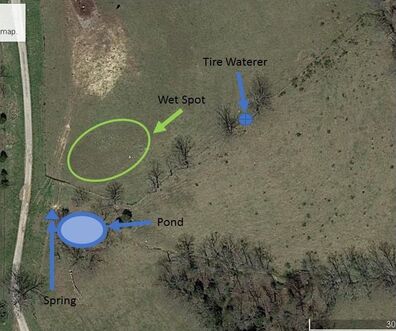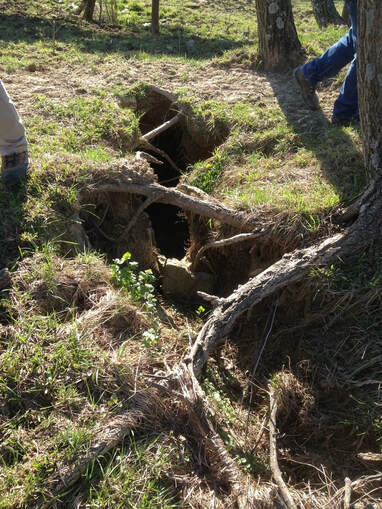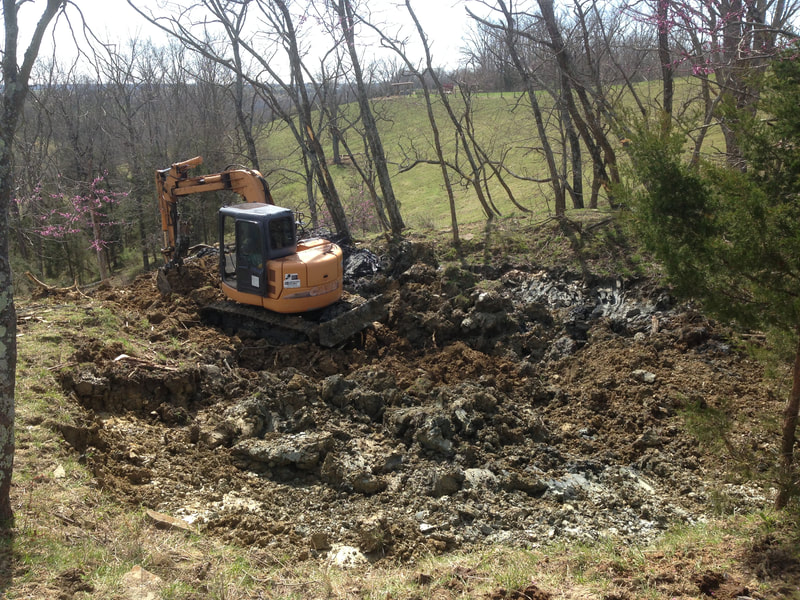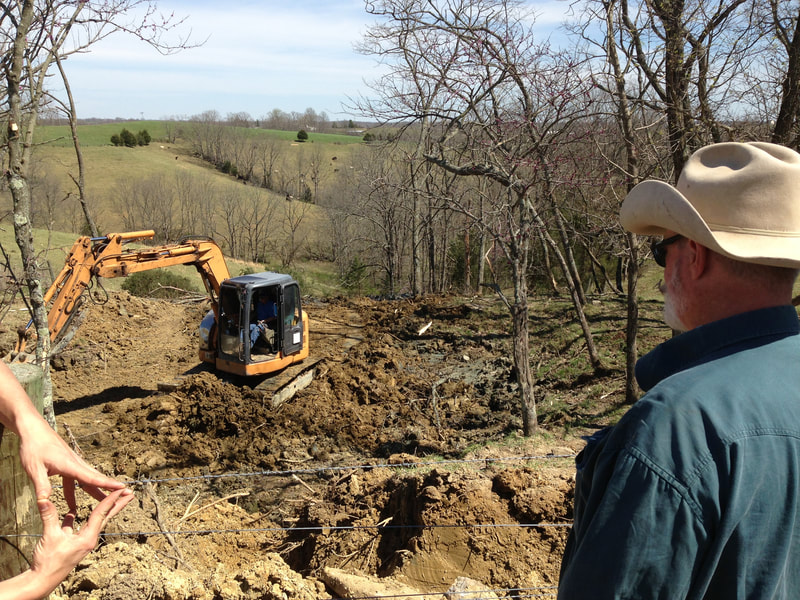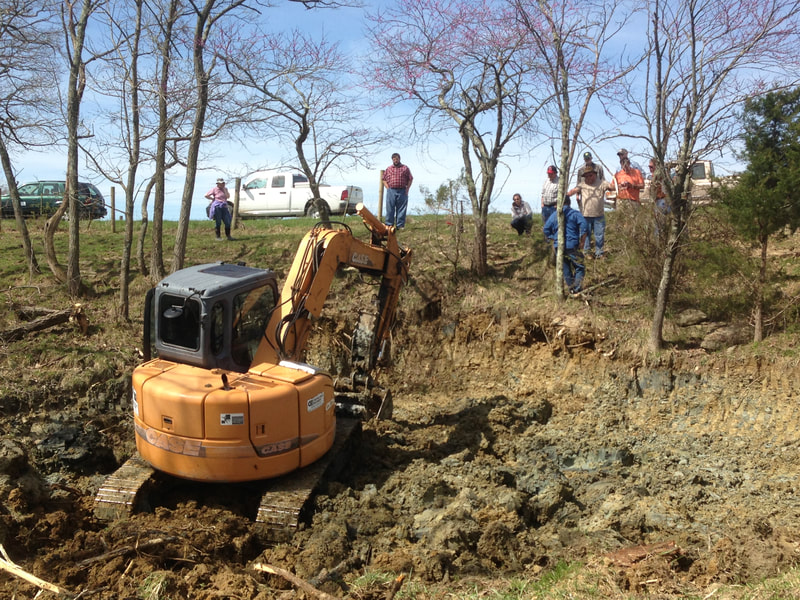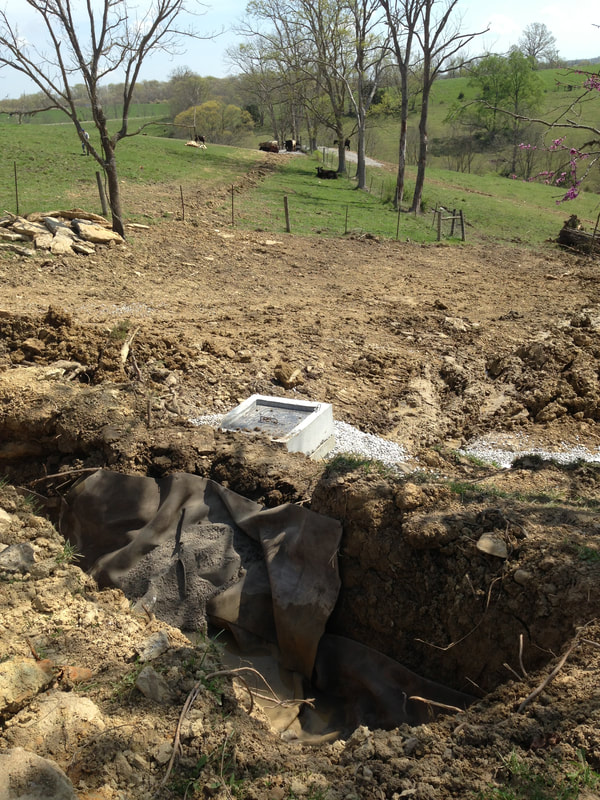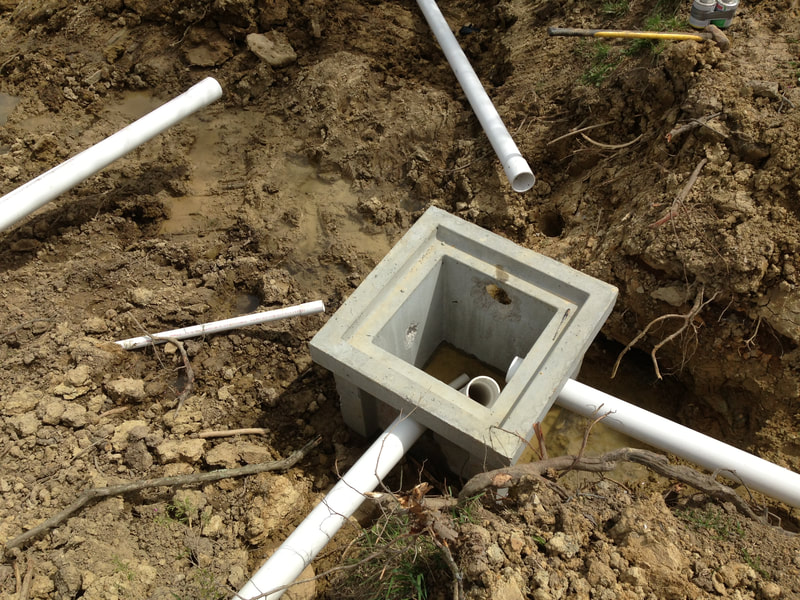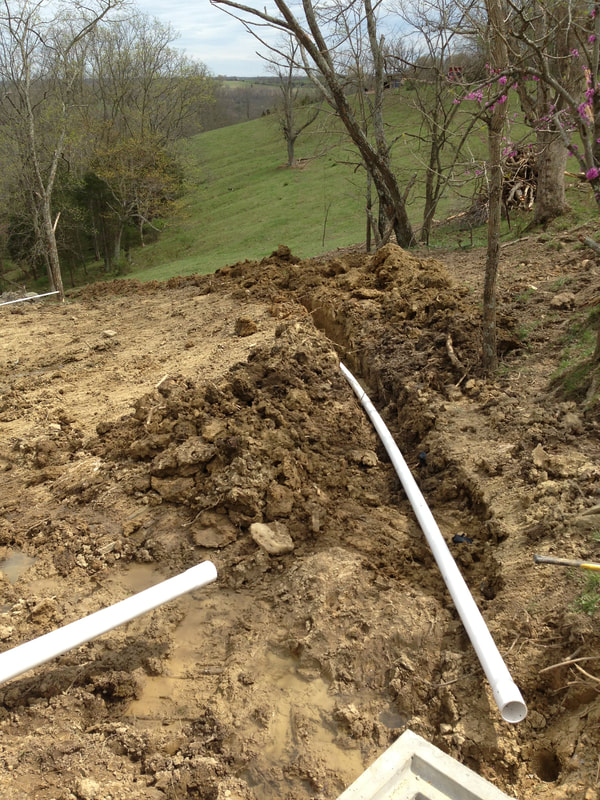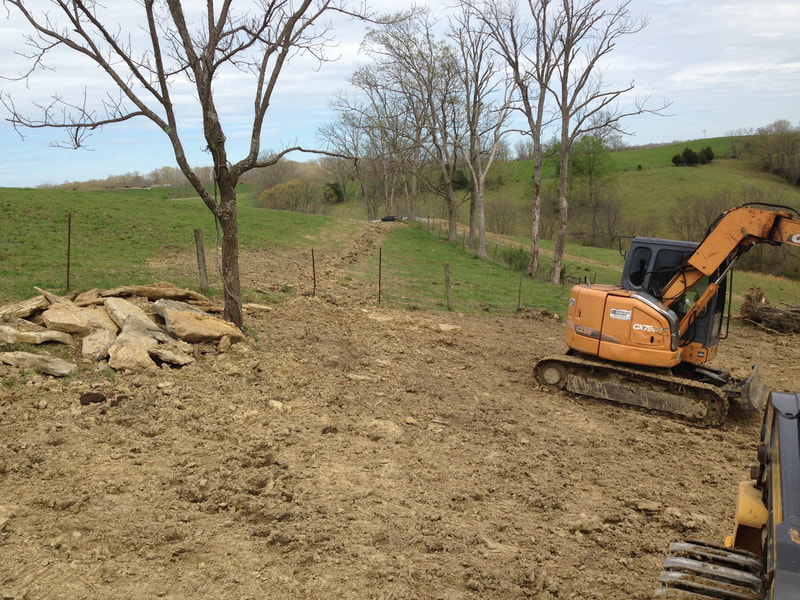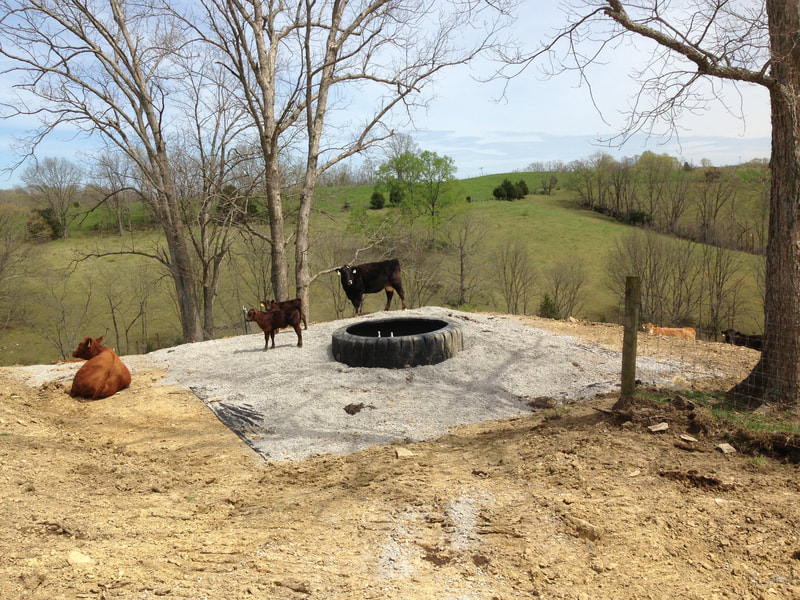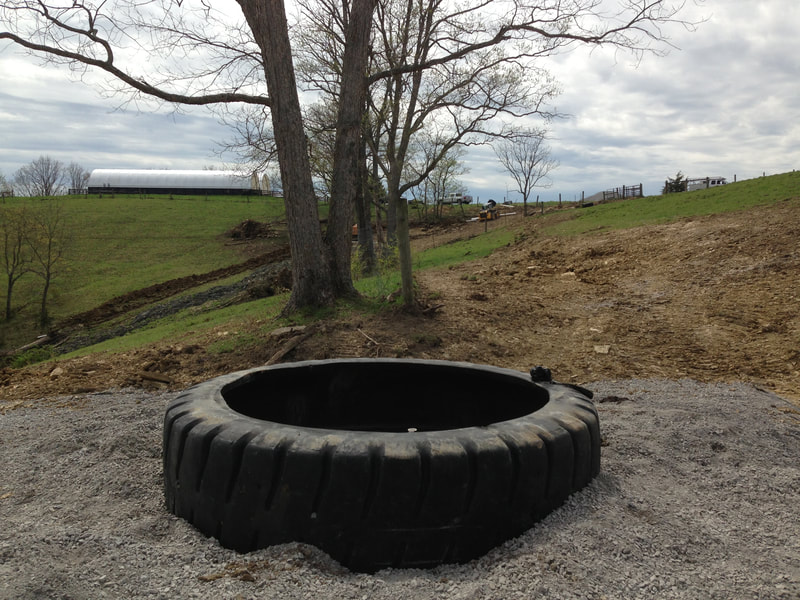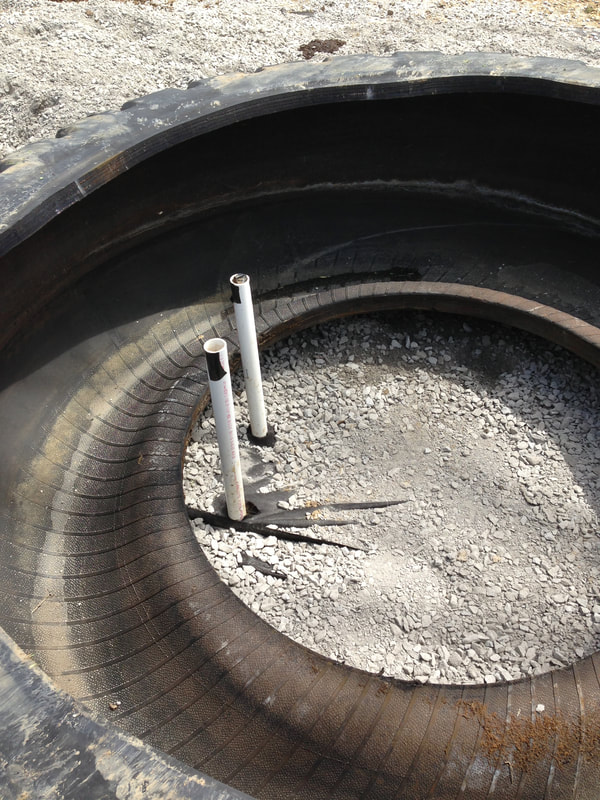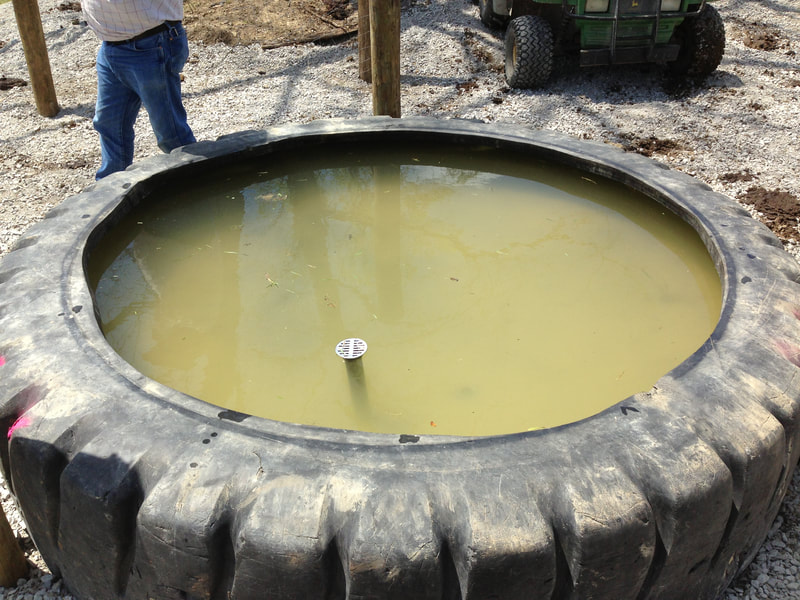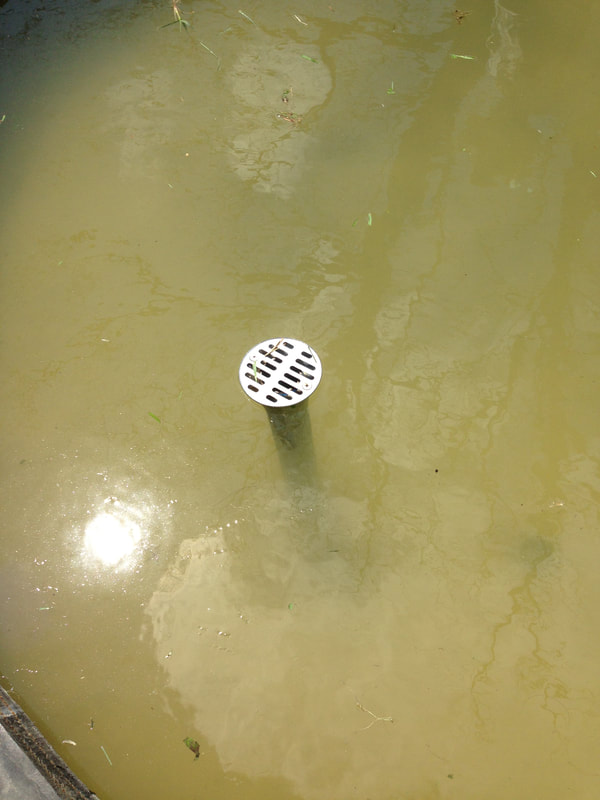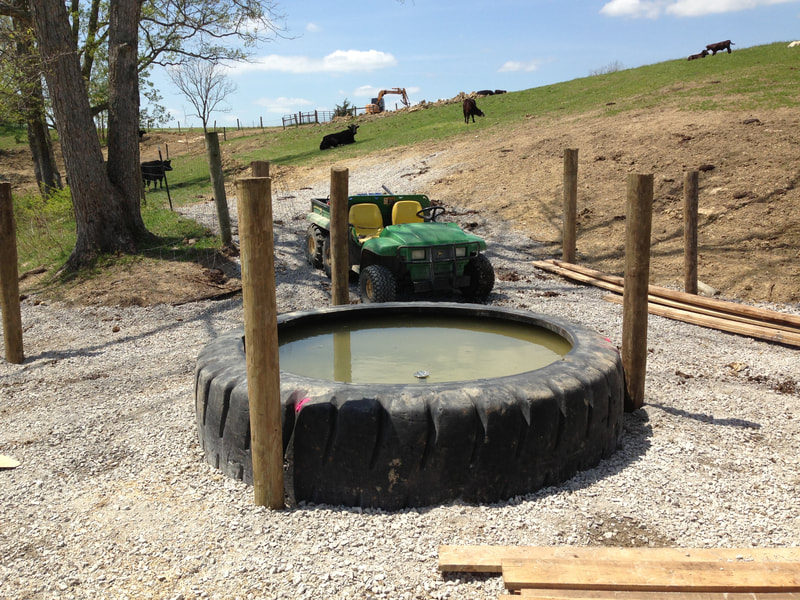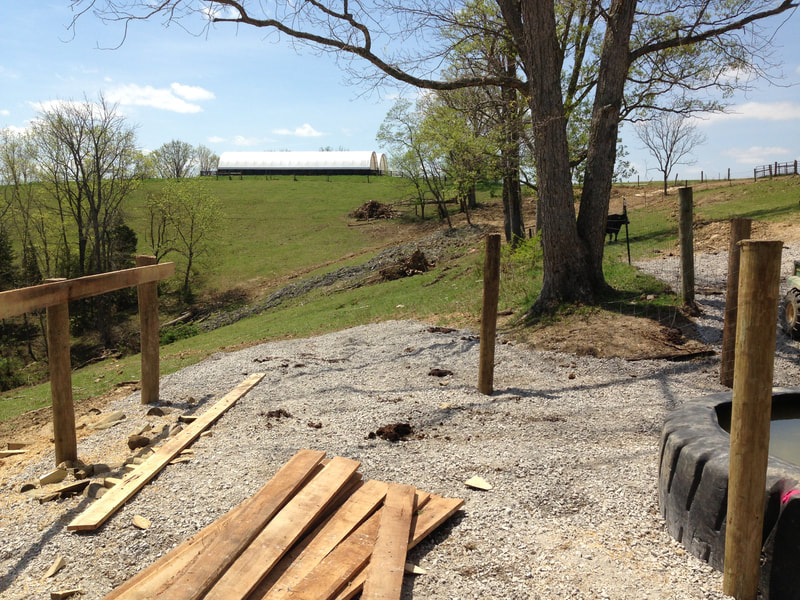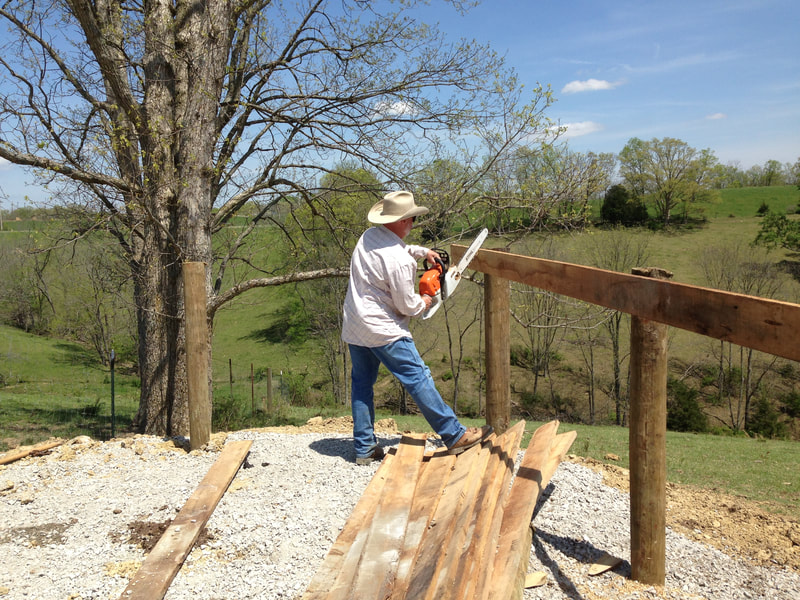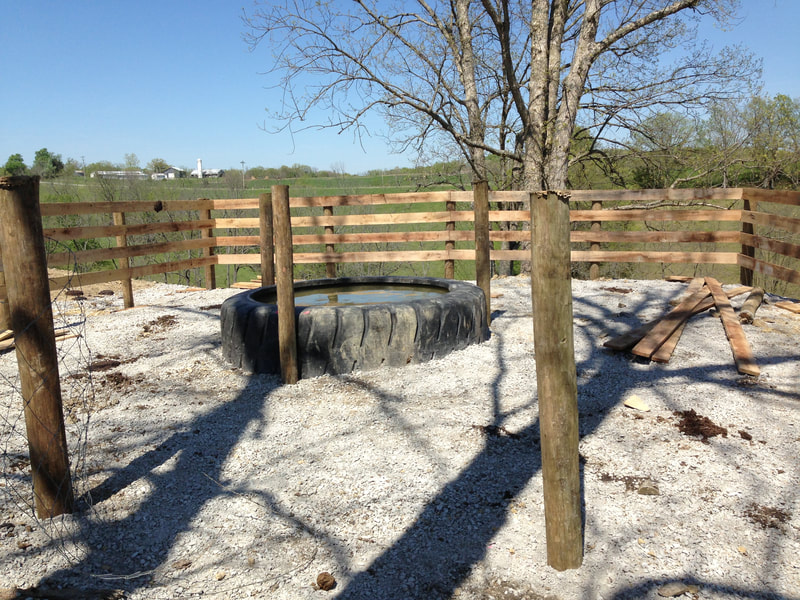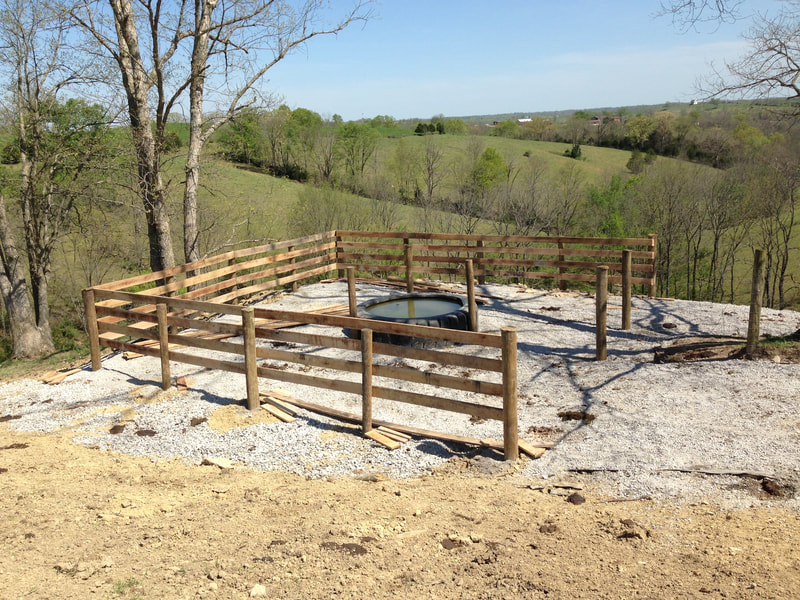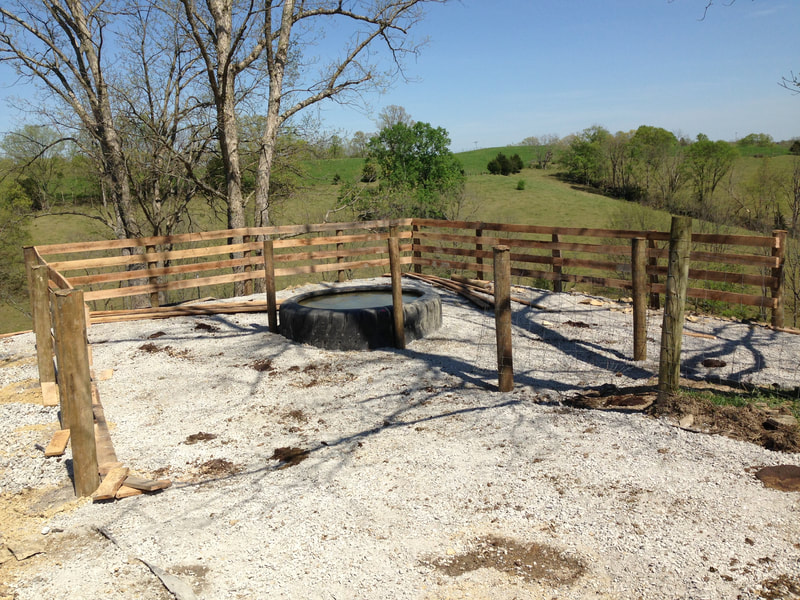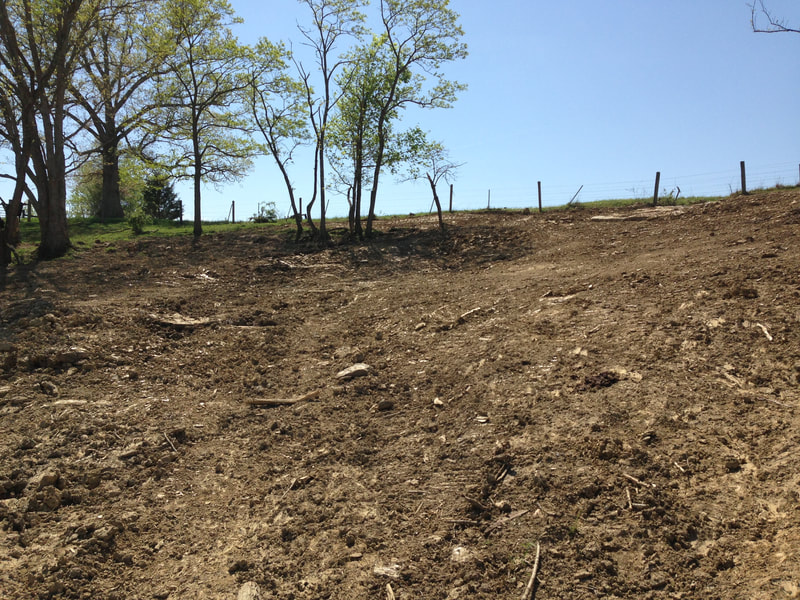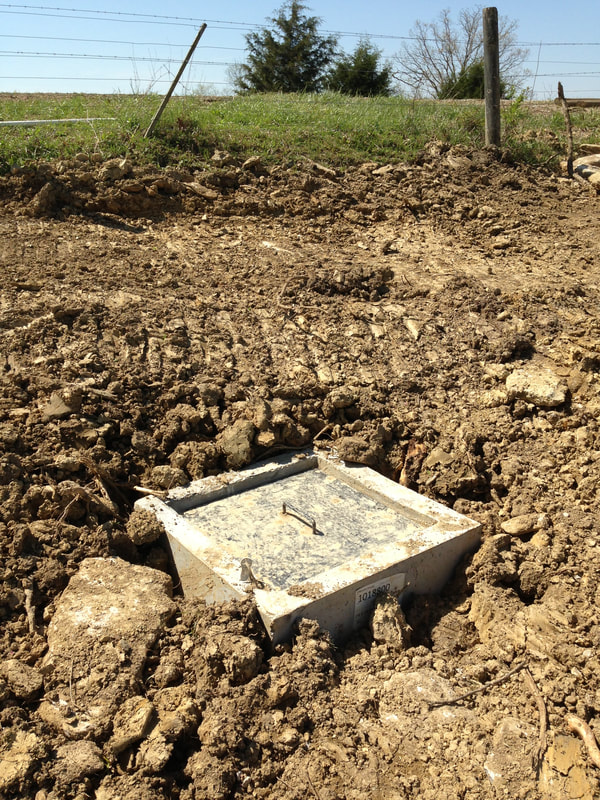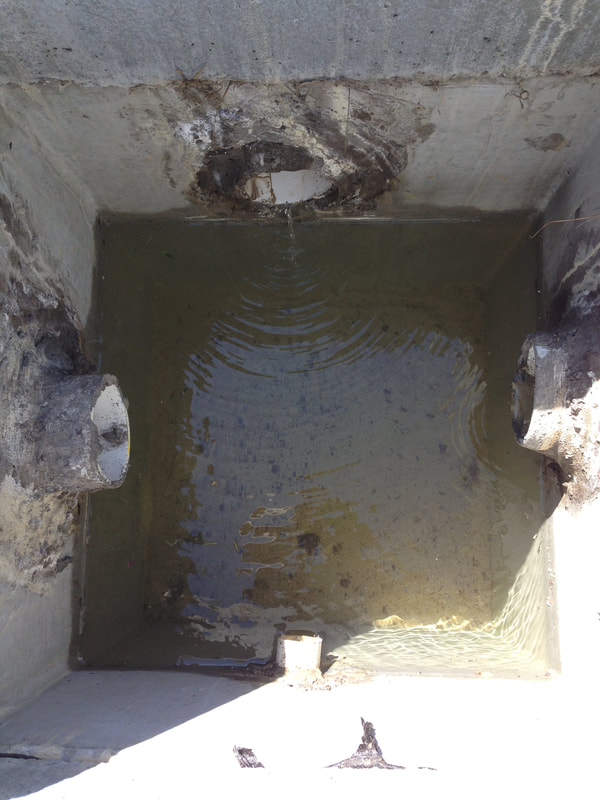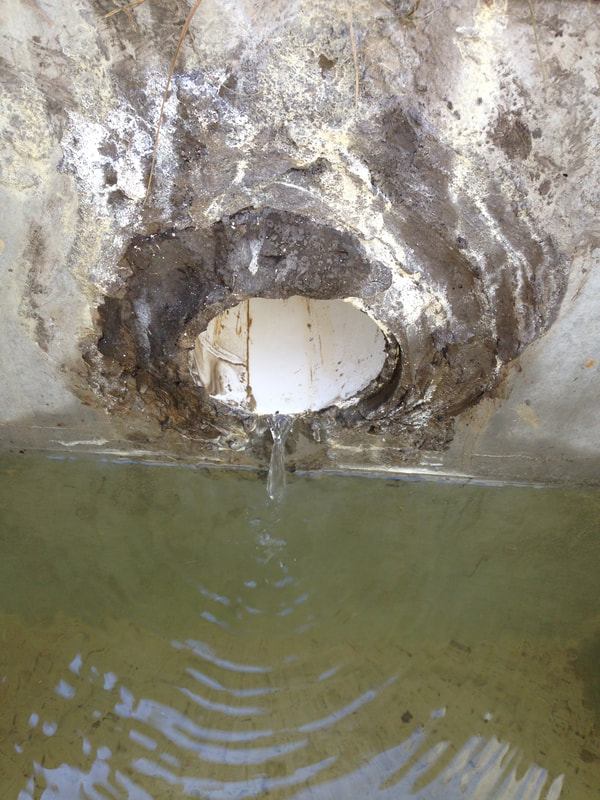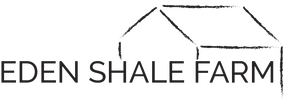In April 2017, we developed a spring and utilized a tire waterer to give the cattle access to fresh water from two separate pastures. Developing this spring also allowed us to get rid of an old, silted in pond that had not held water for many years. The dam of the pond had several washed out spots that baby calves tended to get trapped in. Adjacent to the old dam was a wet spot out in the field that cattle tried to drink water from and when they did, they sank up to their bellies in mud. As part of this spring development we harvested the water from the wet spot and dried the surface up so that the cattle would not have trouble crossing it.
This spring development solved three things:
This spring development solved three things:
- Eliminated an old pond that was hazardous to the cattle
- Dried up a problematic wet spot in a pasture
- Provided cattle with a clean, free water source year round.
Here is one of the breaches in the pond dam where calves kept getting trapped and you can see the grass growing in the silted in pond.
The contractor started by removing the pond dam and digging out all the mud from the pond. We then dug back into the hill to locate the source of the spring.
The contractor started by removing the pond dam and digging out all the mud from the pond. We then dug back into the hill to locate the source of the spring.
After finding the spring, the collection bench was dug out and the collection box was set. There was also a drain tile running from the wet spot in the field to the collection box. We used a concrete cloth to create a low head dam, so that when the water came out of the spring it hit the concrete barrier and then flows into the pipe traveling into the collection box. The water flows into the collection box and then down a buried supply line to the tire water tank. If the spring flow rate happens to be more than the supply line can handle there is an overflow pipe that is buried and can discharge the excess water into the existing stream bed down the hill.
Here are a couple of different views of the spring. The first is from the spring collection point looking down towards the tire waterer. The tire is placed on a bench and will be bisected by the fence allowing it to serve two separate pastures. The third image is the view from the tire looking back up towards the spring.
The plumbing for this tire is very simple. The water coming from the spring will flow continuously into the tire. The overflow pipe will be set at an elevation that will allow the tire to remain full. The overflow pipe will be installed so that it can be removed and the tire can be cleaned and drained. There will be no earth/heat tube added to this tire as the water will be circulating at all times and should help keep the water from freezing. Once both the inlet pipe and the outlet pipes are roughed in and the tire is set and level concrete is poured into the bottom of the tire to create a base of the tank and to seal it to it holds water. The inlet pipe coming from the spring is then cut off at the "floor" of the tank and the outlet is left tall and has a screen over it. This outlet pipe is placed at an elevation so that the tank is kept full of water that is replenishing constantly.
With the tire full of water and all the plumbing functioning correctly, all that was left was to build the pen around the watering location.
The pond site was smoothed to its final grade and the collection box was left exposed so it would be easy to reach for maintenance.
Here is a look inside the collection box. The pipe on the top is the inlet coming from the spring. You can see that it is flowing. The pipe on the right is coming from the wet spot in the pasture. The pipe on the right is the overflow pipe that goes down to the existing creek. The smaller pipe on the bottom is the supply line going to the tire waterer. So the inlet pipe from the spring fills the collection box with water until it reaches the supply line that runs to the tire (lowest pipe in the box). The overflow pipe is the second lowest pipe so that if something in the tire backs up, the spring can still feed water into the collection box and then it simply runs down to the creek and it doesn't disturb the flow of the spring water. This is why you don't want to run the pipe directly from the spring to the water tank. The collection box also serves as a settling basin for any particulates that come from the spring. The collection box is designed so that it can be cleaned out as needed. As you can see the inlet pipe has a steady stream of water coming from the spring. I have not measured the flow rate, but this spring has continued to flow year round ever since the instillation in April 2017.
In this final picture you can see the completed project. The photo is taken standing on the now buried low head dam collection wall (source of the spring). You can see the tiled wet spot in the adjacent pasture. The large rocks were collected during the reshaping of the pond and are being used to armor a roadside drainage ditch that flows during rainfall events. You can see the collection box and the supply line that is buried running down to the tire water down on the crest of the hill.
CONTACT US |
EMAIL SIGN UP |
|
Eden Shale Farm
245 Eden Shale Rd. Office: (859) 278-0899 Owenton, KY 40359 Fax: (859) 260-2060 © 2021 Kentucky Beef Network, LLC.. All rights reserved.
|
Receive our blog updates
|


